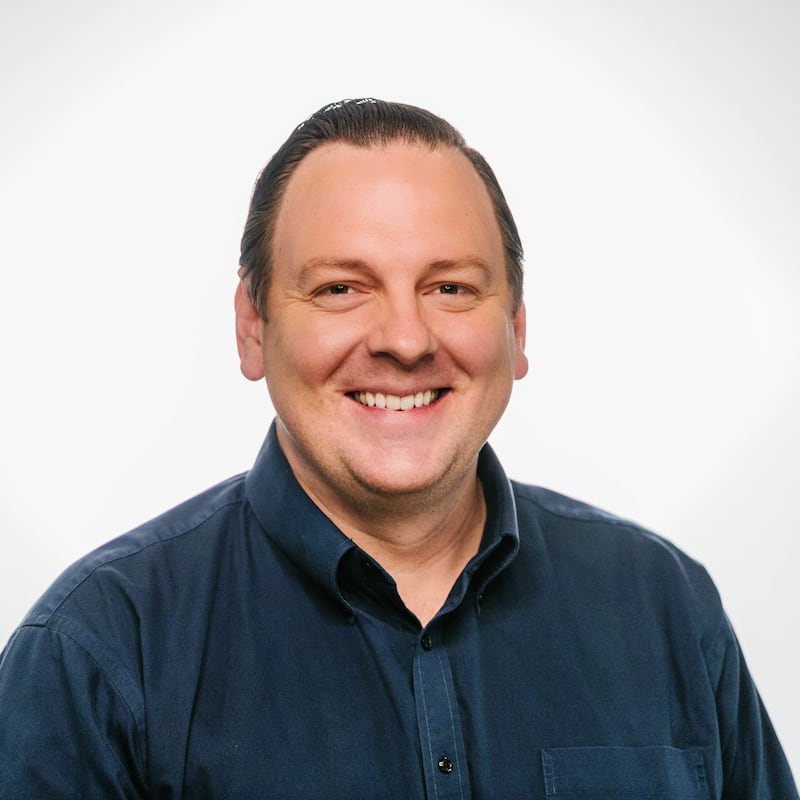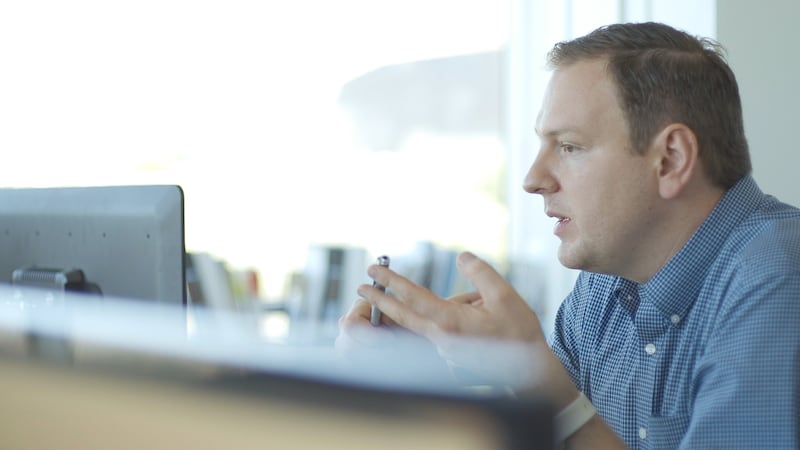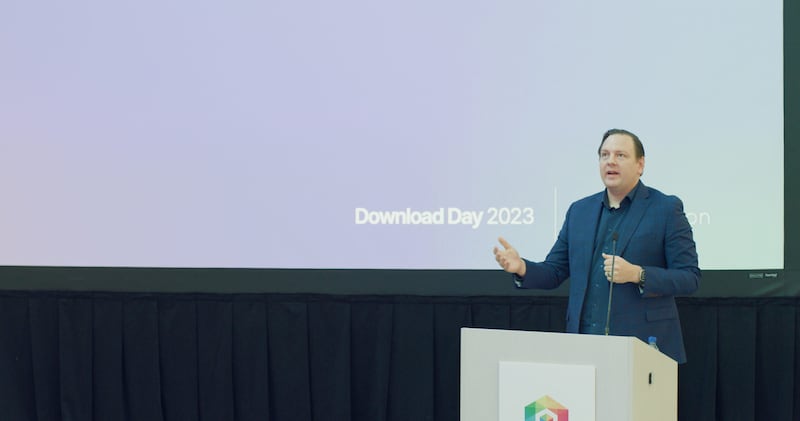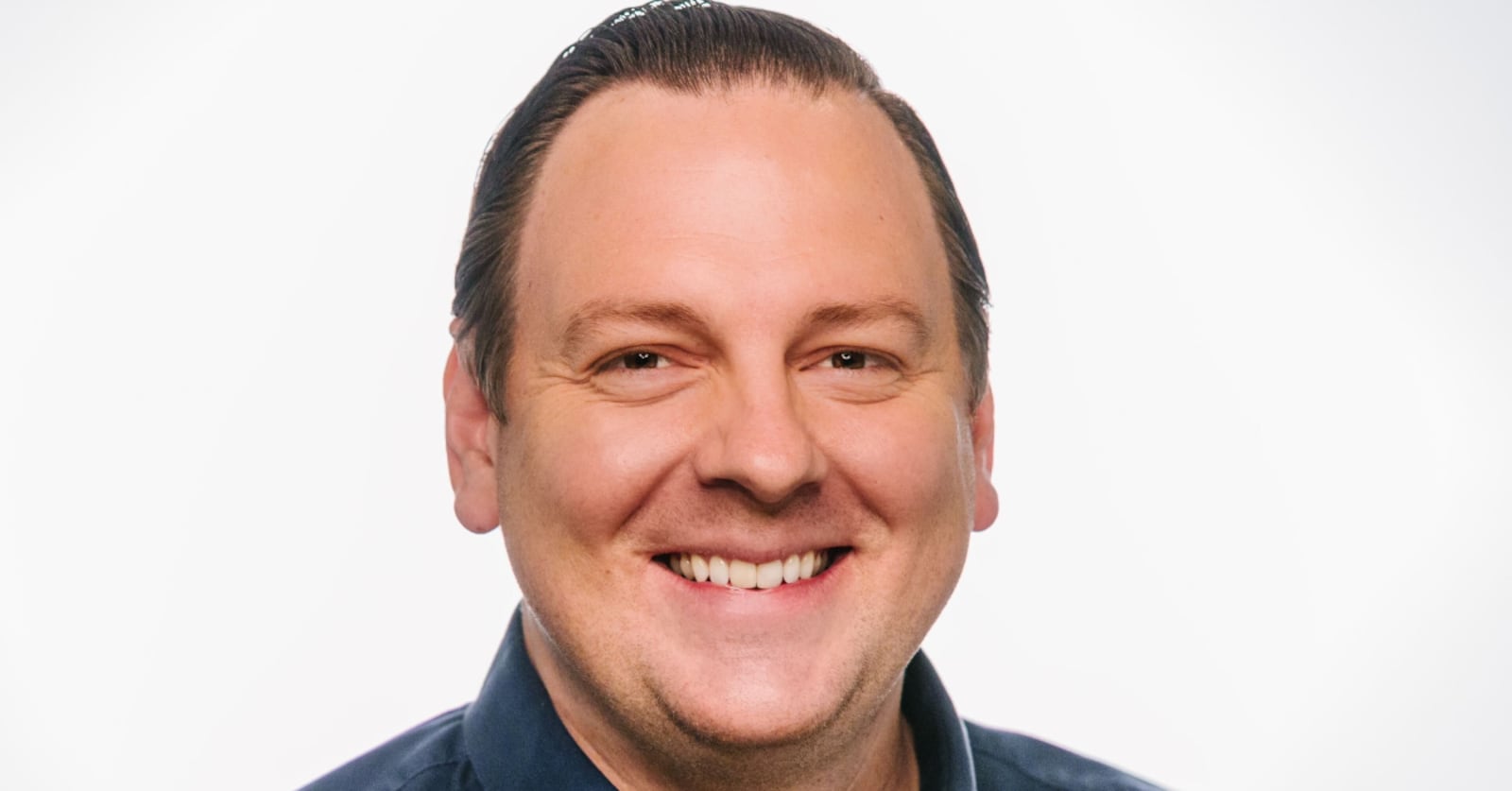
Discovering and developing new medicines is a tough job. It can take over a decade and cost billions of dollars to get a single drug approved.
That’s because biology and chemistry are incredibly complex. There are nearly 20,000 genes encoding hundreds of thousands of proteins across trillions of cells in our bodies, all of which interact every second. There are more different molecules that could be potential medicines than all the atoms in our solar system. It’s an extraordinarily complex problem, and we’ve only just started to scratch the surface of understanding what’s possible.
Fail at something difficult, rather than succeed at something easy
One of the first moments that set me on my path to trying to solve this problem was during a class project back in sixth grade. I was studying at a school in Portland, Oregon, where I grew up. It was a really special school where I learned how to be creative, think logically and communicate well.
The final class project in my sixth grade science class was called “Sludge,” and it was something I’d been looking forward to all year. Each student got to pick a difficulty level for the Sludge project, where our teacher would mix together a bunch of different liquid, solid and gas materials and put them in a jar. We’d then use the tools and techniques we’d explored in sixth grade (e.g., how to separate liquids and solids, how to calculate physical properties of materials, etc.) to try and identify all the components of our Sludge.
I eagerly picked the hardest level, where there were 10 different substances to identify. After weeks of work, I’d only identified three and had fallen so short of my own expectations. I was devastated, but my teacher, Carol Parganis, could see the devastation on my face. She took me to lunch.
At that lunch, she told me how important it was that I picked something really hard to try and that it was better to fail at something hard than to succeed at something easy. She convinced me that even though I had done poorly, I was talented and could still be really good at science. That was a pivotal moment in my life that I will always remember. For some reason, it sparked something enduring in me. I decided then to dedicate my life to solving extraordinarily complex problems in science.
That passion took me to Rice University in Houston, where I studied bioengineering and business. It’s also where I met my wife. After graduating from Rice in 2005, I started an MD/PhD program at the University of Texas, and my wife started her medical residency in neurology at the University of Utah here in Salt Lake City, where she grew up.
We tried the long-distance thing for a while, but after a year of flying back and forth, we decided it wasn’t a great business model for our marriage. I decided to fly out to interview with the head of the MD/PhD program at the University of Utah to see if I could transfer (which really wasn’t a thing for MD/PhD programs). His name was Dean Li, and after chatting for a couple of hours, he told me I could transfer if I came to work in his lab. As a bioengineer, I never thought I’d end up in a molecular biology and genetics lab in Utah, but I made the leap in 2009 because supporting my wife and her career was one of my top priorities.
When I joined Dean’s lab, his team had been studying a brain disease called cerebral cavernous malformation for about a decade. Using the tools of traditional molecular and cell biology, we generated strong evidence that pointed to a specific hypothesis about how to treat the disease. I was confident we were on the right path, but when we tested our hypothesis, the data was exactly the opposite of what we expected. We had failed. It was the first of many times in my career that I was truly humbled by biology’s complexity, and it reminded me a lot of that Sludge project in sixth grade.
In many ways, that failure reflected a problem that plagues our entire industry: We were limited by the tools at our disposal, leading us to a reductionist view of biology and a hypothesis that was inherently biased. For the past 40 years, our scientific tools have been relatively bespoke and artisanal, typically designed to distill biology into a test that can answer a specific question.

We created Recursion in 2013 to harness these cutting-edge technologies and map the complex world of biology and chemistry in a less biased way, making it easier to pinpoint potential treatments faster and more efficiently. Biology may be complex, but it’s not unsolvable—it has fundamental truth, even if that truth is too complex for any one human to comprehend. We envisioned building a new kind of company capable of discovering medicines at a scale and pace unlike any other using technology.
Defining a new industry (and the culture to drive it)
Recursion was an experiment from the beginning. Like that final project in my sixth-grade science class, we were going after an extraordinarily hard problem. We were bringing together different fields and disciplines to operate at the interface of technology, biology and chemistry. Our founding team included a doctor (Dean Y. Li, M.D., PhD), a computer scientist (Blake Borgeson, PhD), and a bioengineer (that’s me). Only one of us had ever focused on drug discovery before, so there was a lot we didn’t know—but that allowed us to start with a clean slate and figure out how to discover medicines in a better way without being tied down by past methods or traditions.
To realize our vision, we knew we would need a near-equal mix of tool builders (technologists) and drug hunters (biologists and chemists). If you’ve ever worked with a biologist and a data scientist, you know these are very different types of people with very different schools of thought. For example, much of our academic system in the life sciences is set up in a way that teaches people to build upon prior work and avoid challenging dogma. Culturally, that’s very different from technical fields like data science, where you’re taught to challenge assumptions whenever possible.
Over the years, we’ve created a purposefully uncomfortable diversity of thought that pushes us to step outside industry and functional conventions. We’ve had to create a new language from scratch, which has become the foundation of our technical culture. When new people join us, it can take them 6-12 months to really get up to speed because of this new language and way of thinking, but it’s deeply rooted in who we are. Our people need to think fast and nimbly in complex layers and systems while embracing failure and demonstrating high change velocity.
To teach our people to successfully transition to our new type of company and deliver our mission, we created guideposts that we call our “Founding Principles.” Combined with our core values, they form the essential shape of our culture.
Our Founding Principles direct us in making scientific and technical decisions and differentiate us from other biopharma companies. They emphasize the core philosophies that make us, us. This includes things like “Build Connected Datasets” that emphasize our focus on relatable, high-dimensional signals of biology and chemistry as our fuel rather than using data as an exhaust to test a specific hypothesis. Another is “Optimize for the Portfolio,” which prioritizes actions that accelerate many programs at scale rather than narrowly focusing on each individual program. In total, we codified six Founding Principles, and we implore our people to incorporate them into every decision. They work in harmony with our five core values that define the day-to-day behaviors that further our mission. Together, they are the compass that points our people toward decoding biology.

Being open to change is painful but profound
Almost every year, we make big shifts in our mindset to take advantage of what we’ve learned. For example, back in 2020, we had reached a critical inflection point in our ability to use our maps of biology and chemistry to actually predict relationships between any given biological context and chemical compound, even without physically testing the combination.
From that point forward, we made the decision that all future drug discovery programs would be initiated using this new mapping and navigating approach as opposed to our former “brute force” approach, where we screened every possible combination. It caused a temporary setback in productivity as our people adjusted, but in the long run, it had a step-function shift in our ability to advance our mission.
Finding the right people who embrace change and can operate with this mindset takes work. When searching for new talent to join us, we look for people who approach problems with a first-principles mindset and seek fundamental truths. We attract a lot of big-picture thinkers who have a strong desire to grow and create a positive impact.
They join us because they believe there’s a better way to do things. Many of them bring years of experience from the industry, which is important because we can learn a lot from both their successes and failures, but it also requires a lot of unlearning and professional metamorphosis on behalf of our people. We are doing something that’s never been done before. To be successful, we must challenge convention and question what has made us successful in prior contexts—this was one of the things I underappreciated in the early years of building Recursion and wish I would have focused more on.
In many ways, hiring and managing people is harder than science. Science has a fundamental truth; there’s always a right answer. People, on the other hand, have many truths. There are different answers for different people. There’s no one-size-fits-all solution for everyone. As a new founder and CEO, I didn’t fully realize how much time and effort I needed to put into managing and developing our team. Regardless of how sophisticated a company’s technology or science is, it will always need incredible people at its foundation. It took me three or four years to wrap my head around that. It’s something I still work on appreciating more every year.
As I reflect on Recursion’s extraordinary progress, I have so much appreciation for our people and culture. They are the lifeblood that has made our success possible. When we founded the company, Recursion was one of only a handful of companies attempting to harness technology to improve drug discovery.
Today, nearly 10 years later, we’re at the forefront of an entirely new sector known as TechBio, with hundreds of technology-enabled drug discovery companies following in our footsteps. This burgeoning industry is on the bleeding edge of transforming healthcare for the betterment of society. Nothing makes me more proud than knowing our team of 500+ Recursionauts is at the heart of this transformation. Together we’re not only building a company, we’re also building an entire category.

